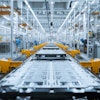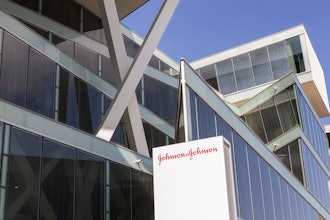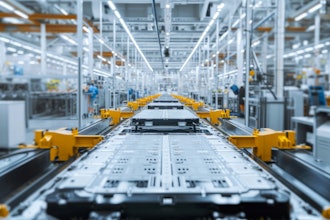Executive Brief
Manufacturing’s trifecta: Optimism, growth,
and investment
Manufacturers are hungry for growth. Following a
debilitating recession and sluggish recovery period, many
manufacturing leaders are ready to play for higher stakes,
take bigger risks, go all the way in for the big payoff.
Growth has to be just around the corner, they predict.
Is it idealistic, wishful thinking? Or, is fact-based analysis
fueling a new optimism? In this brief, we will examine the
optimism, see how it is impacting growth strategies, and
offer advice on ways that modern IT solutions can help
support this forward-facing mindset. Like a three-legged
stool, where each leg is critical to maintaining balance,
modern ERP technology plays a vital role in
manufacturing’s positive growth outlook.
Optimism
According to a recent PwC survey, 34% of industrial
manufacturing CEOs are very confident of growth.
Optimism extends to the entire global economy, with
37% of CEOs saying they believe that the global economy
will improve in the next 12 months, This is a big
improvement over last year, when just 19% of CEOs were
optimistic about the global economy.
Other industry sources agree. Industry Week reported that
The Manufacturers Alliance for Productivity and Innovation
(MAPI) found growth to be a key theme in a January 2014
survey. MAPI’s composite index from the survey, a leading
indicator for manufacturing’s status, improved from 66 to
67, the highest level since September 2011. This marked
17 quarters of growth in the sector, the report said.
“The increase in the composite index and the continued
improvement in most individual indexes signal that there is
momentum pushing manufacturing activity and that activity
is expected to increase over the next three to six months,”
said Donald A. Norman, MAPI senior economist and
survey coordinator. “The results suggest the sector has
reason for optimism for all of 2014.”
This optimism isn’t just a US phenomenon. In the UK, the
CBI quarterly Industrial Trends Survey of 405
manufacturers reported that 41% of businesses are more
optimistic about the general business situation than three
months ago, the highest since April 1973.
“Signs of a continued recovery in the manufacturing sector
appear to be feeding through to investment plans over the
next 12 months, with plans for capital expenditure on plant
and machinery (relative to last year) the highest for
17 years. Investment plans for innovation and training and
retraining also remain robust,” said Katja Hall, CBI chief
policy director, adding, “Confidence is rapidly rising
among British manufacturers, with a real sense of business
optimism.”
What is fueling this optimism? The CBI contends that it is
more than wishful thinking, citing that 38% of businesses
reported an increase in total orders. The volume of new
domestic orders was up 17%, the highest since April 1995,
and 16% increase in export orders also represented strong
growth. In addition, 36% of manufacturers expect this
climb to continue into the next year.
Growth
In their Barometer Report, PwC took a deeper look at this
optimism and what it means for manufacturing investments
and growth plans.
Regarding actual company growth expectations, 82% of
survey respondents expect positive revenue growth for
their own companies in the next 12 months, with 15%
forecasting double-digit gains. CEOs predict the average
revenue growth rate for their own companies to be in the
5.3% range.
This optimism bodes well for the job market, as the
majority of manufacturers surveyed (56%) say they plan to
hire new employees over the next 12 months. According
to PwC’s report, the most sought-after employees will be
skilled labor (33%), followed by production workers (30%),
professionals/technicians (28%), and white-collar support
personnel (20%)
Manufacturers plan to increase investments to support this
growth strategy, the PwC report finds. In fact, 75% of
respondents plan to increase investments in the next 12
months, up from 71% at the same time last year. The
leading investment areas will be new products or service
introductions, information technology, and research and
development.
2 Executive Brief
Another area of growth is likely to be through mergers
and acquisitions, according to PwC. More than one
quarter of respondents (28%) say they plan M&A activity in
the year ahead, with a majority of that group focusing on
purchasing another business, followed by the sale of
part/all of their own business or a spin-off. For 18% of
respondents, expansion will take the form of moving into
new markets abroad, while 13% planned to invest in new
facilities abroad.
ERP
With expectations for growth come investments in the
future. Forward-looking manufacturers are, indeed, paving
the way to increased capacity and reinforcing the
infrastructure to manage larger volumes. Investing in
modern ERP solutions helps manufacturers identify growth
opportunities and take action to seize those opportunities
and capitalize on them quicky. First, advanced analytics
help spot trends in markets, including upward swings in
regions or among target markets or new products. Once
upward trends are spotted, changes can be made to
enhance the product line, expand into new regions or
focus greater attention on a target market in order to tap
into the potential. Because modern software promotes
efficiency and increases productivity, manufacturers can
often increase output in these new areas, without adding
headcount.
Advanced functionality in modern solutions also gives
manufacturers added visibility, enables a global
perspective and provides the ability to manage complex
orders, including Made-to-Order and Engineer-to-Order
projects. As manufacturers gear up for the new reality of
customer expectations, this advanced functionality is more
important than ever before. Resarch indicates that
manufacturers are understanding that value and investing
in the tools to support their optimistic growth plans.
Industry Week quoted Bobby Bono, PwC’s US industrial
manufacturing leader, as saying, “We saw a notable
increase in indications for both long-term capital
investment and short-term spending plans during the
second quarter….Companies have maintained historically
high levels of liquidity and are increasingly looking to put
this money to work in strengthening their operations,
adding talent and improving technology in a highly
competitive marketplace. ”
PwC also states that plans for new investments of capital
rose notably during the second quarter of 2014, with 52%
of respondents saying they plan increased spending in
the next 12 months. Plans for spending on research and
development also rose significantly, hitting 45%. Other
areas of investment include new product or service
introductions (43%) and information technology (33%).
As the PwC survey indicates, manufacturing executives
recognize the need to invest in IT solutions—especially
modern ERP systems—to support growth strategies. If
adequate systems aren’t in place, added volume,
increases in customer expectations, and the expansion to
a global supply chain can’t happen. Failure to meet
expectations and as-promised deliveries to new
customers is a sure way to curtail future growth and
tarnish a brand’s reputation in the critical early stages of
launching into new markets or countries.
Global growth, particularly, requires a robust supply chain
management system that supports visibility across the
global network of vendors, suppliers, channel partners,
and contractors.
In KPMG’s “Performance in the Crosshairs,” authors
reference a Forbes survey that asked manufacturing
CEOs about the capabilities of their existing supply chain
management systems. Only 20% percent of respondents
claim to have complete visibility (and that is up from the
even lower 9% in 2013). So, although the trend is
improving, it is clear that most manufacturers lack a
sufficient supply chain management system.
From the Forbes research it seems manufacturers
recognize this gap and are planning to remedy it by
investing in software solutions to help manage the global
footprint, as 75% of respondents expect that they will have
a globally integrated supply chain within the next three to
five years.
“Already, we are seeing massive benefits come from new
technologies,” noted Bruce Rogers at Forbes Insights
about the CEO survey. “Those that are able to create a
common stream of information, a common language and a
common view of the business will see more than just
incremental increases in business efficiency—they will also
enjoy massive competitive advantages.”
3Executive Brief
641 Avenue of the Americas
New York, NY 10011
800-260-2640
infor.com
About Infor
Infor is fundamentally changing the way information is published and consumed in the enterprise, helping 73,000 customers in more than
200 countries and territories improve operations, drive growth, and quickly adapt to changes in business demands. To learn more about
Infor, please visit www.infor.com.
Copyright© 2014 Infor. All rights reserved. The word and design marks set forth herein are trademarks and/or registered trademarks of Infor and/or related affiliates and subsidiaries. All other
trademarks listed herein are the property of their respective owners. This document is provided for informational purposes only and does not constitute a commitment to you in any way.
The information, products and services described herein are subject to change at any time without notice. www.infor.com.
INF-1450839-EN-US-1014-1
“An efficient, effective and integrated supply chain is
absolutely critical to managing the disruptive complexity
that is now upon us,” says Jeff Dobbs, KPMG Global
Sector Chair, Industrial Manufacturing. “This isn’t just about
wringing more efficiencies or costs out of the supply
chain; this is about using your supply chain strengths to
improve the overall profitability of the company and to
create a platform for sustainable growth.”
Manufacturing’s trifecta: Optimism, growth and investment
Manufacturers are hungry for growth. Following a debilitating recession and sluggish recovery period, many manufacturing leaders are ready to play for higher stakes, take bigger risks, go all the way in for the big payoff. Growth has to be just around the corner, they predict. Is it idealistic, wishful thinking? Or, is fact-based analysis fueling a new optimism? In this brief, we examine the optimism, see how it is impacting growth strategies, and offer advice on ways that modern IT solutions can help support this forward-facing mindset. Learn how modern ERP technology plays a vital role in manufacturing’s positive growth.
Latest in Home
ABB to Invest $110 Million in 4 U.S. Plants
September 17, 2025
Nvidia CEO Huang Says He's Disappointed by China Chip Curbs
September 17, 2025



















